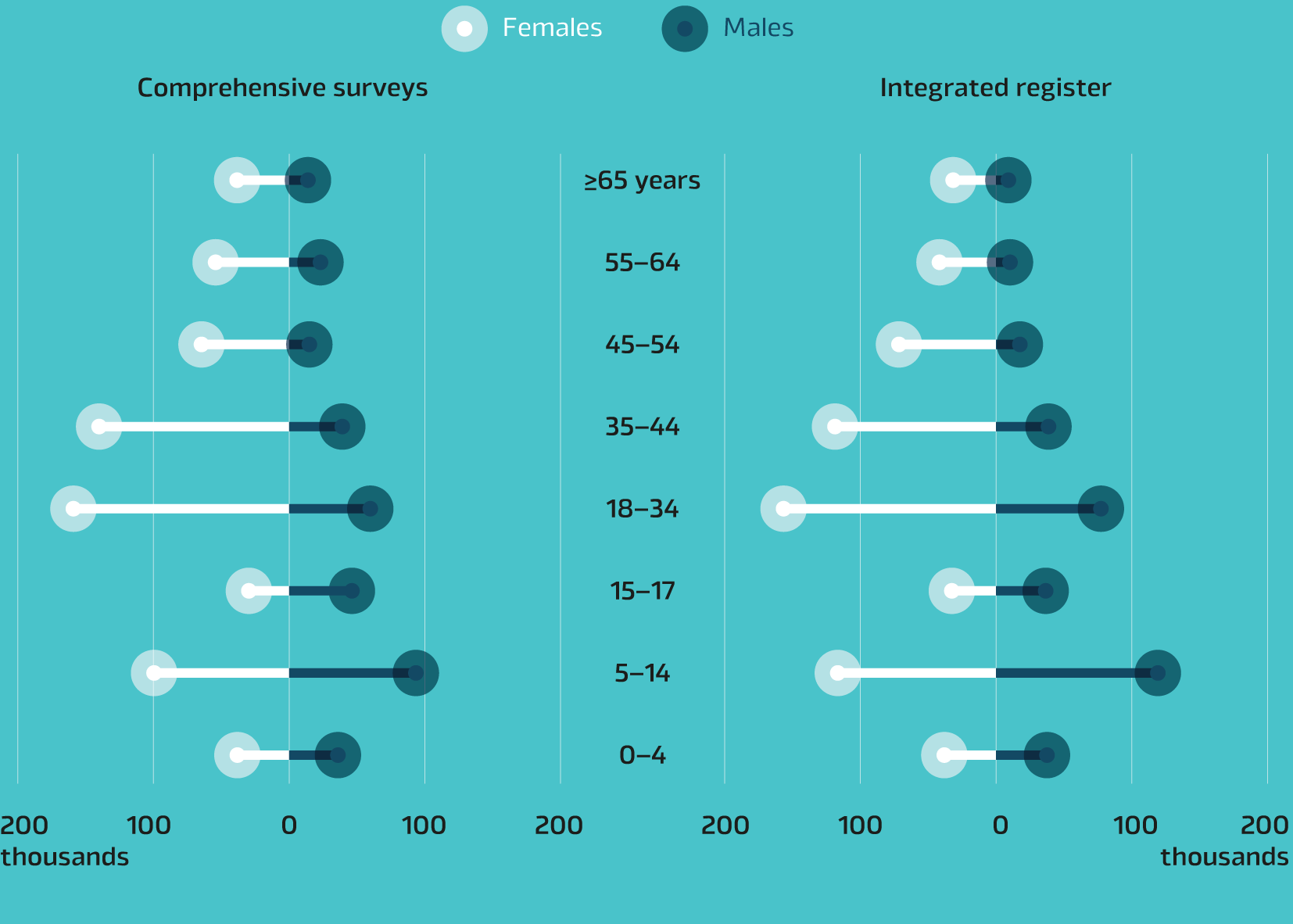Poland
Official and experimental refugee statistics
Background
As a result of the war in Ukraine following the escalation of the Russian invasion in February 2022, large numbers of refugees arrived in neighbouring Poland, with many continuing to reside in the country into 2024. Establishing a robust data system to track the number of refugees, as well as their demographic characteristics, living conditions and needs has been essential for effective decision-making and policy development.
Under the leadership of Statistics Poland several investments have been made to strengthen both official and experimental statistics. This included the establishment of an integrated register of refugees, thematic surveys in collaboration with international partners, and the use of big data sources in partnership with the private sector.
Developing an integrated register of refugees
Based on the Register of Ukrainians managed by the Polish Headquarters of the Border Guards (KGSG) as the master record, Statistics Poland established the Integrated Register of Refugees from Ukraine that incorporates data from a total of eight different administrative registers. These included the Population register (PESEL), the Register of Personal Identity Cards (RDO) as well as various other registers on social assistance, education, and insurance.
The work was facilitated by well-established data sharing protocols that enabled Statistics Poland to easily access the different databases, and unique ID numbers that helped identify and control for duplicates. A final data validation phase using birth and death registers, ensures quality results that provide official estimates of Ukrainian refugees in Poland (997,737 as of March 2023) with a full breakdown of sex and age available. [1]
Number of refugees by gender in age group: comprehensive surveys and the integrated register in 2023

Source: Statistics Poland
Sample surveys to assess
refugee health status
Recognising the limitations of the register given the dynamic population movements in the border region as well as the breadth of data available for the whole population, Statistics Poland embarked in 2022 on a series of complementary surveys. In collaboration with WHO, Statistics Poland has completed two rounds (2022 and 2023) of a refugee health survey.
The first round focused on the reception points located in two regions (Podkarpackie and Lubelskie voivodeships), while the second expanded to also include other locations. The process combined three main samples using distinct sampling frames: refugees in households, refugees in accommodation establishments and refugees at the border crossings. Using a combination of questionnaires – one covering demographic information and health-related indicators and the other capturing behavioural insights through in-depth interviews – results provide a rich data source for decision-makers in the region. With two rounds conducted, data can also be compared over time. [2]
Survey results were presented at a national conference organised with the Podkarpackie, Lubelskie and Lviv regional governors, medical and sanitary services, as well as local authorities. Findings informed resource allocation for example concerning dental care and acute illness. Results were also presented, together with WHO, during the 2023 and 2024 UN Statistical Commissions and other conferences.
Big data and experimental
refugees’ statistics
Complementing these key data sources, Statistics Poland has started to work with private sector partners to venture into experimental statistics using data from mobile operators and banks. Analysing data of active SIM card usage (following the distribution of free SIM cards to Ukrainian refugees) and usage of VISA payment cards (issued in Ukraine and used in Poland), new analysis became possible. However, data sharing limitations due to the European Union’s General Data Protection Regulation (GDPR) and other operational limitations such as the lack of mobile network coverage in border areas, created some challenges.
Using modelling techniques, analysis has produced new estimates of the number of Ukrainian refugees in Poland, information about population movements within the country and expenditure patterns. However, because results differ significantly from official sources described above, Statistics Poland is currently working to determine how results can be used to complement official sources.
“In-depth analyses of data from sample surveys, in combination with integration of data from various sources, can be helpful to adequately address assistance for Ukrainian refugees. Because of the possibility of simultaneous access to different data sources and the profile of its activities, Statistics Poland becomes a natural leader for such undertakings”.
Cierpiał-Wolan Marek, Director of the Statistical Office in Rzeszów, Statistics Poland
The use of the International Recommendations
Although Statistics Poland was not aware of the International Recommendations on Refugee Statistics (IRRS) at the start of the refugee crisis in 2022, having since become a member of EGRISS and becoming familiar with this resource, they have been used to validate the NSO’s work. In particular, the integral role of the statistical office to lead and coordinate efforts to produce national statistics on displacement, the delineation of the statistical framework outlined by IRRS and the data source and data integration guidelines. In addition, the IRRS’ guidance on coordination with both national and international stakeholders has proved useful in the Polish context.
Conclusion
The case study illustrates the added value of NSO leadership concerning statistics on forced displacement and how data integration across a range of data sources (administrative registers, sample surveys and big data) can be a powerful tool strengthen analysis.
1] See: Residents of Ukraine under temporary protection (Statistics Poland).
[2] See: Health of refugees from Ukraine in Poland 2022: Household survey and behavioural insights research (Statistics Poland).
